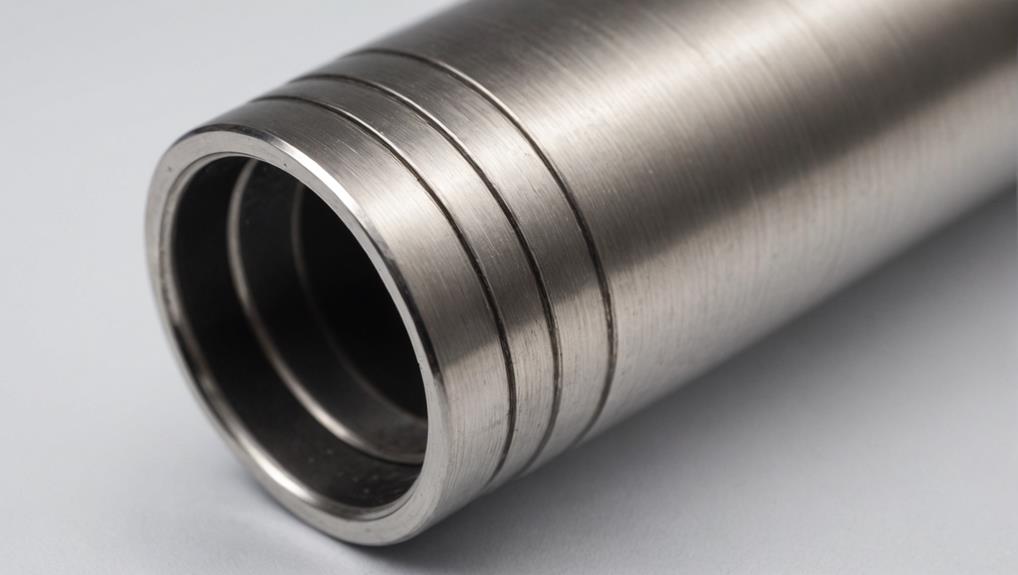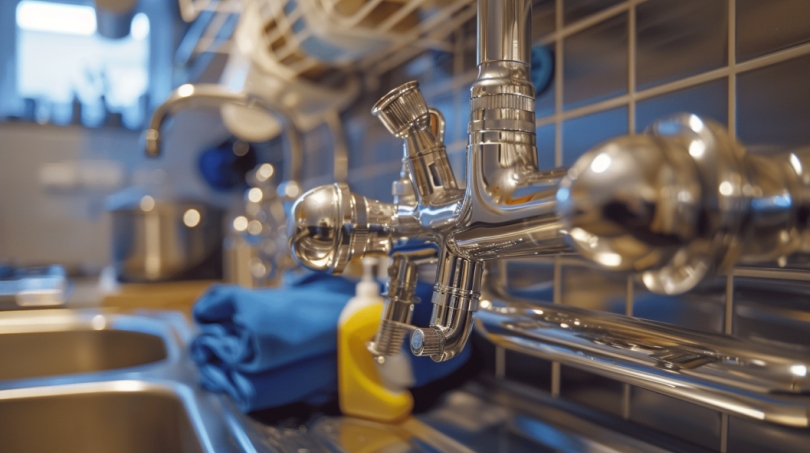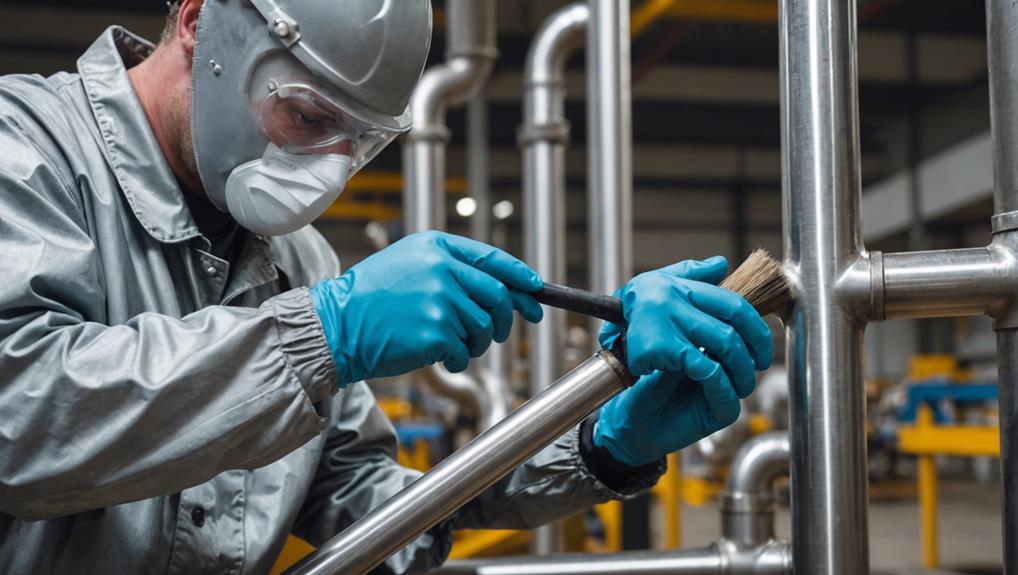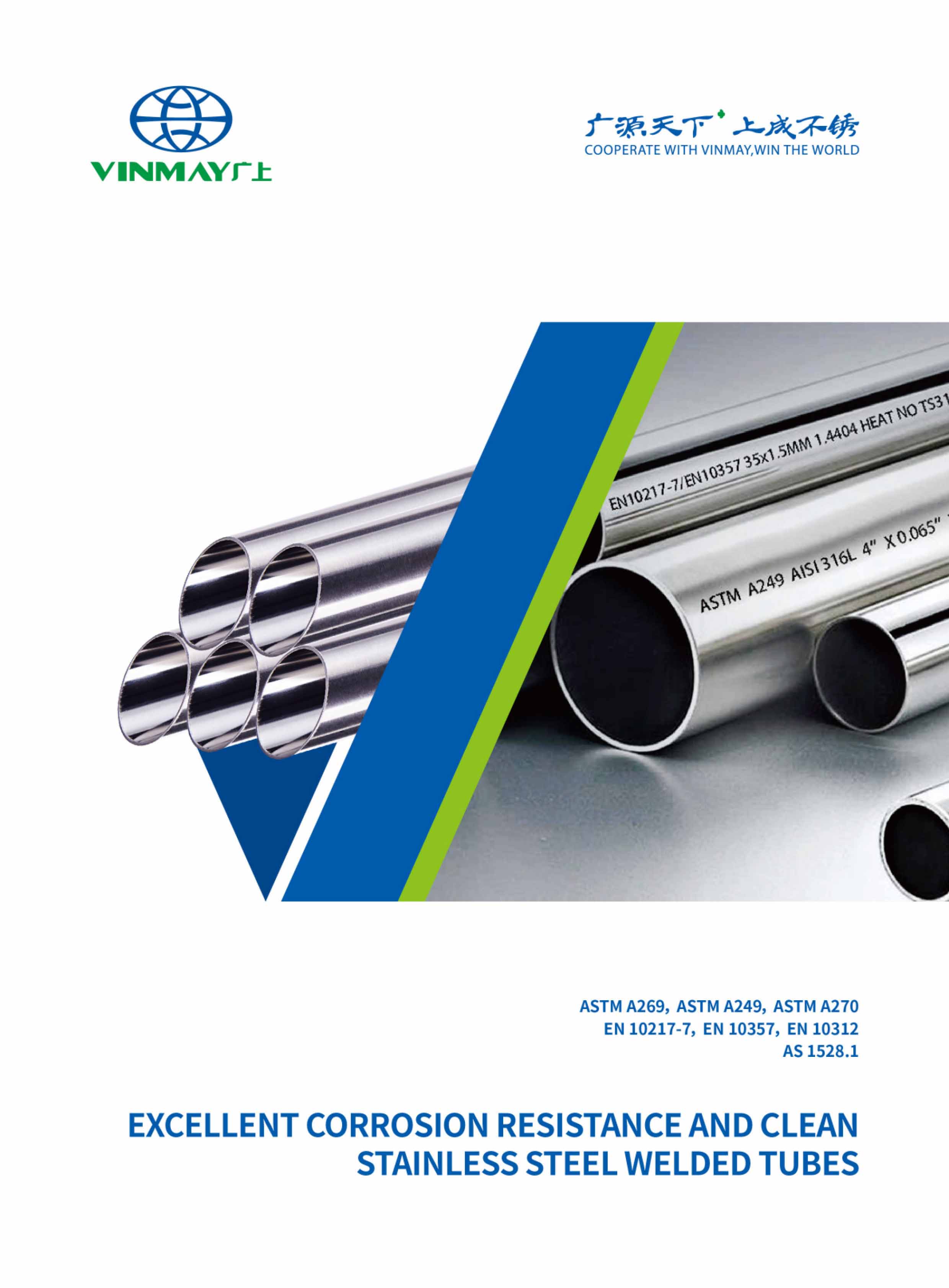To sustain stainless steel pipes and safeguard their corrosion-resistant passive layer, it's essential to know how to clean stainless steel pipes effectively. Begin by using gentle soap or detergents for regular cleaning. For persistent stains, use dedicated stainless steel cleaners or natural substances like white vinegar and lemon juice for mineral deposits. Cleaning stainless steel pipes can also be done with toothpaste to buff minor rust stains, while sandpaper or steel wool should be applied sparingly for more challenging areas. For internal cleansing, make use of kerosene followed by thorough rinsing. Chemical cleansing methods aid in upholding the protective chromium oxide film. Proper examination and upkeep guarantee functionality and aesthetics. Uncover additional techniques and details that will further streamline these crucial procedures.

The passive layer in stainless steel, primarily composed of chromium oxide, is vital for its corrosion resistance. This thin, inert film forms spontaneously upon exposure to oxygen and serves as a protective barrier against contaminants.
Remarkably, the passive layer possesses a self-repair mechanism, allowing it to regenerate if damaged, thereby maintaining the integrity and longevity of the stainless steel pipes.
Understanding the passive layer in stainless steel is crucial for comprehending its exceptional corrosion resistance. This passive layer, primarily composed of chromium oxide, forms naturally when chromium in the alloy reacts with oxygen in the environment. This interaction creates a thin, strong, protective barrier shielding the metal beneath from corrosive elements.
The formation of the passive layer is a critical consideration when cleaning stainless steel pipes. Effective cleaning methods, including stainless steel pipe chemical cleaning, maintain and restore this protective film. When contaminants such as dirt, oil, or iron particles accumulate on the surface, they can disrupt the integrity of the passive layer, making it vulnerable to corrosion.
Cleaning stainless steel pipes should involve non-abrasive techniques and harsh chemicals that might degrade the protective barrier should be avoided to guarantee the passive layer remains intact. Utilizing appropriate cleaning agents, such as those recommended for stainless steel pipe chemical cleaning, helps preserve the layer. By adhering to these practices, one can sustain the longevity and performance of stainless steel pipes, ensuring they remain resistant to corrosion and other forms of degradation. Proper maintenance of the passive layer is the cornerstone of effective stainless steel pipe care.
A remarkable feature of stainless steel is its innate ability to self-repair through the formation of a passive layer. This layer, composed primarily of chromium oxide, forms naturally when the chromium in stainless steel interacts with oxygen in the environment. The passive layer is microscopically thin yet exceptionally robust, providing formidable resistance to corrosion, oxidation, and staining.
When the surface of stainless steel is scratched or damaged, the exposed chromium rapidly reacts with oxygen to re-form the passive layer, effectively 'healing' the metal. This self-repair mechanism is essential for maintaining the integrity and longevity of stainless steel pipes, especially in environments prone to mechanical wear and chemical exposure.
To ensure peak performance, it is vital to maintain the passive layer by preventing contamination from substances like iron, chlorides, and other corrosive agents. Regular cleaning with suitable, non-abrasive agents and adhering to proper passivation procedures can greatly enhance the resilience of the passive layer.
Understanding and leveraging this self-repair mechanism allows for more efficient maintenance strategies, guaranteeing stainless steel pipes remain durable and functional over extended periods.

Frequently, selecting the right cleaning agent for stainless steel pipes is crucial to maintaining their integrity and appearance. The choice of cleaning agents greatly impacts the longevity and aesthetic of these pipes. Among the most effective agents are special stainless steel cleaners, white vinegar, lemon juice, and even common household items like toothpaste.
| Cleaning Agents | Application Method |
|---|---|
| Special Stainless Steel Cleaner | Apply with a soft cloth; follow manufacturer's instructions |
| White Vinegar or Lemon Juice | Rub gently with a soft cloth |
| Toothpaste | Spread with a soft cloth; polish gently |
Special stainless steel cleaners are formulated to address specific contaminants while preserving the metal's passive layer. They are suitable for regular maintenance and effectively remove dirt, oil, and light stains. White vinegar and lemon juice, both mildly acidic, are excellent for removing mineral deposits and water spots. Toothpaste, a mild abrasive, can be used for polishing and removing minor rust stains.
For more stubborn stains, such as persistent rust or ingrained dirt, sandpaper or steel wool can be employed cautiously. However, these should be used sparingly to avoid scratching the surface. Using the appropriate cleaning agents guarantees the stainless steel pipes remain both functional and aesthetically pleasing.

To effectively clean stainless steel pipes, begin with routine cleaning methods using mild soap, detergents, or ammonia solutions to remove everyday contaminants.
For more advanced cleaning, employ solvent techniques with organic solvents such as acetone or methyl alcohol to tackle stubborn stains.
Address specific types of damage, such as rust or limescale, with targeted agents like oxalic or phosphoric acid, ensuring thorough rinsing and drying to maintain the integrity and appearance of the pipes.
Effective regular cleaning of stainless steel pipes is crucial to maintaining their integrity and appearance. This process starts with surface cleaning, utilizing soap, gentle detergent, or ammonia solutions in warm water. Apply these agents with a soft cloth or nylon sponge, ensuring thorough coverage. It is crucial to rinse the pipes with clean water and dry them with a soft cloth to prevent water spots and common soiling. Avoid using high-pressure water guns, as they may harm the surface.
For more stubborn stains, a neutral detergent applied with a soft cloth can be efficient. During this process, refrain from using tough or abrasive materials to prevent scratching the stainless steel surface.
Internal cleaning involves injecting kerosene to dissolve stains and oxides, followed by a thorough rinse with clean water. For challenging internal contaminants, mechanical cleaning methods, such as using specialized brushes or rods with cleaning fluid, are recommended.
Adhering to these steps guarantees the passive layer of chromium oxide remains intact, preventing rust and corrosion. Regular adherence to these cleaning protocols will sustain the aesthetic and functional performance of stainless steel pipes over the long term.
Advanced cleaning methods are vital for maintaining the best performance and longevity of stainless steel pipes. Utilizing organic solvents such as acetone, methyl alcohol, and mineral spirits can effectively remove fresh stains. It is important to make sure these solvents are chlorine-free to prevent damage. Smaller articles can be immersed in the solvent, or a vapor cleaning method can be used for better control. Post-cleaning, wipe the surface to eliminate any residual solvent.
For moderate soiling, mild abrasive cleaners should be used with a soft cloth, nylon scouring pad, or soft bristle brush. It is crucial to use long, even strokes in the direction of the polished finish, avoiding circular rubbing actions. After cleaning, rinse the surface thoroughly and dry-wipe it to prevent water stains.
More intensive methods are needed when dealing with heavier soiling. Ammonia solutions or warm/hot detergents can be used, along with acidic cleaners if necessary. Follow the same cleaning procedures as for moderate soiling, ensuring thorough rinsing and drying to complete the process. Implementing these advanced cleaning methods ensures the stainless steel pipes remain in excellent condition, extending their service life significantly.
Building upon the advanced cleaning techniques previously discussed, it is imperative to address specific types of stains and damage that can afflict stainless steel pipes.
Fingerprints can be removed with soap detergent warm water, or hydrocarbon solvents for more stubborn marks. Oil and grease marks require isopropyl alcohol or acetone applied with a clean, non-scratching cloth. For burnt-on stains, soak the area in hot water mixed with diluted ammonia or detergent, using a nylon brush to gently scrub the surface.
Coffee and tea stains necessitate soaking in sodium bicarbonate and sodium carbonate solutions, respectively, or applying these solutions with a soft cloth for larger objects. Localized rust stains can be treated with an oxalic acid solution, which should be rinsed thoroughly with clean water to avoid residue.
Limescale, cement, and mortar splashes demand a more vigorous approach, utilizing diluted vinegar or phosphoric acid-based cleaners.
Heat stains should be addressed with domestic metal polishes, ensuring to treat the entire surface to prevent discoloration patches. For structural damage, such as dents or cracks, immediate removal from service is recommended until repairs can be made. Minor corrosion can be managed with all-purpose lubricants, while moderate to severe corrosion should be handled with specialized stainless steel cleaners or professional services.
Using stainless steel tubes for heat treatment can help prevent heat stains by ensuring the material is more resistant to discoloration and damage when exposed to high temperatures.
How can one secure the longevity and peak performance of stainless steel pipes? The cleaning process is pivotal. Securing stainless steel pipes remain free from contaminants is essential for maintaining their structural integrity and preventing corrosion. The cleaning process involves several meticulous steps designed to preserve the passive layer and enhance durability.
Firstly, identify the type of contamination present. This could include dirt, grease, oil, or rust. Different contaminants require specific cleaning agents and methods to be effectively removed.
Secondly, implement an appropriate cleaning technique. For routine cleaning, soap or mild detergent solutions are recommended. Apply these with a soft cloth or nylon sponge, ensuring gentle yet thorough cleaning.
Lastly, secure proper rinsing and drying. Residual cleaning agents or water can lead to spotting or corrosion if not completely removed. Using distilled water for the final rinse can prevent mineral deposits.
Key considerations:

Given the critical role of maintaining stainless steel's corrosion resistance, passivating treatment becomes an essential process. This treatment involves enhancing the natural protective oxide layer on stainless steel to maximize its corrosion resistance. The process typically requires immersing the cleaned stainless steel in an acid bath, such as nitric or citric acid, to remove surface contaminants and promote the formation of a robust chromium oxide layer.
| Step | Description | Considerations |
|---|---|---|
| Initial Cleaning | Thoroughly clean the surface to remove dirt, oils, and other contaminants. | Use mild detergents or special stainless steel cleaners. |
| Acid Bath | Immerse the stainless steel in an acid solution, often nitric or citric acid. | Ensure the appropriate concentration and duration. |
| Rinsing | Rinse the stainless steel thoroughly with deionized water. | Prevent water spots and residue. |
| Inspection | Check for uniform passivation and absence of contaminants. | Use visual and chemical inspection methods. |
Passivation varies by stainless steel grade and chromium content, requiring precise control over the treatment parameters. Not only does this process enhance corrosion resistance, but it also extends the lifespan of stainless steel pipes. A reliable approach ensures that passivating treatment is performed efficiently and effectively, safeguarding the integrity and performance of stainless steel in demanding environments.
Passivating treatment greatly enhances the corrosion resistance of stainless steel pipes, making it a necessary step for guaranteeing their durability and longevity. Proper maintenance skills are vital to preserve the structural integrity and aesthetic appeal of stainless steel pipes. Effective maintenance involves both regular cleaning and strategic protective measures to counteract potential contaminants and corrosion.
Key maintenance skills include:
These maintenance practices not only enhance the longevity of stainless steel pipes but also ensure their best performance in various industrial applications. By diligently following these steps, users can maintain the integrity and appearance of their stainless steel pipes, thereby maximizing their investment and ensuring operational efficiency.
Stainless steel pipes should be cleaned every six months to prevent corrosion, maintain surface shine, and guarantee longevity. Regular maintenance, including appropriate cleaning methods and passivating treatments, is essential for peak performance and durability.
Yes, vinegar can be used to clean stainless steel pipes. It effectively removes stains and limescale. Apply with a soft cloth, rinse thoroughly, and dry to prevent water spots. Avoid prolonged exposure to prevent potential damage.
Indeed, eco-friendly solutions for cleaning stainless steel pipes exist. Utilize a mixture of baking soda and water for mild abrasiveness, or white vinegar diluted with water for effective, non-toxic cleaning. Both methods maintain eco-conscious standards.
Signs of corrosion on stainless steel pipes include pitting, crevice corrosion, discoloration, surface rust, and a dull or rough texture. These indicators suggest the passive chromium oxide layer is compromised, necessitating immediate cleaning and maintenance.
Did you know that regular maintenance can increase the lifespan of stainless steel pipes by up to 20%? To prevent water stains, thoroughly dry after cleaning and use a microfiber cloth to polish the surface.
See Also - Stainless Steel Pipe for Water
The longevity and aesthetic charm of stainless steel pipes are notably improved through careful cleaning and upkeep. Implementing correct cleaning agents, methods, and passivating treatments guarantees the preservation of the crucial chromium oxide passive layer, essential for corrosion resistance. Importantly, stainless steel's worldwide demand is forecasted to increase by 5.68% CAGR from 2021 to 2028, emphasizing the significance of maintaining these materials. Adherence to suggested practices guarantees excellent performance and prolonged service life of stainless steel pipes.
Read More:



